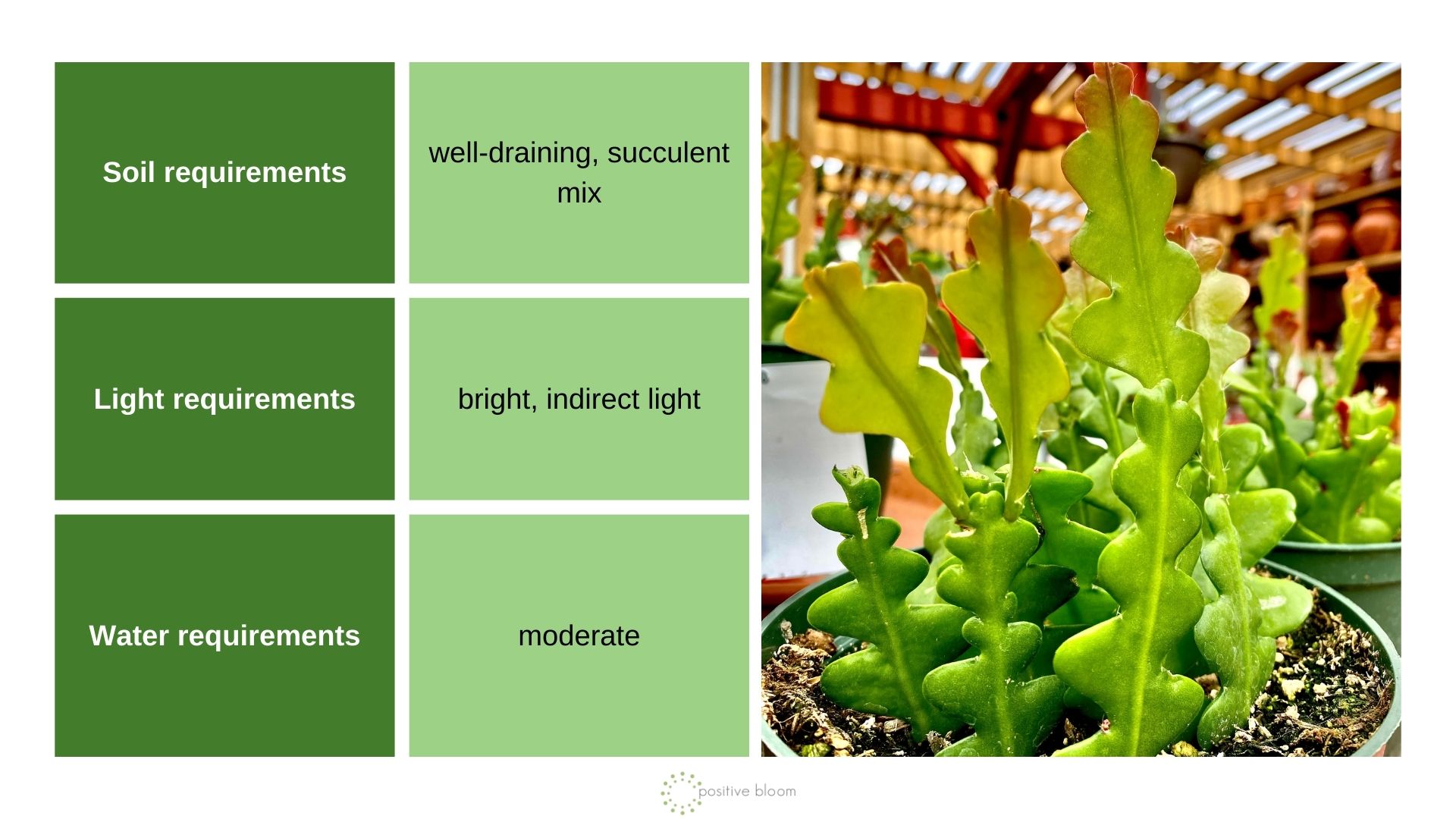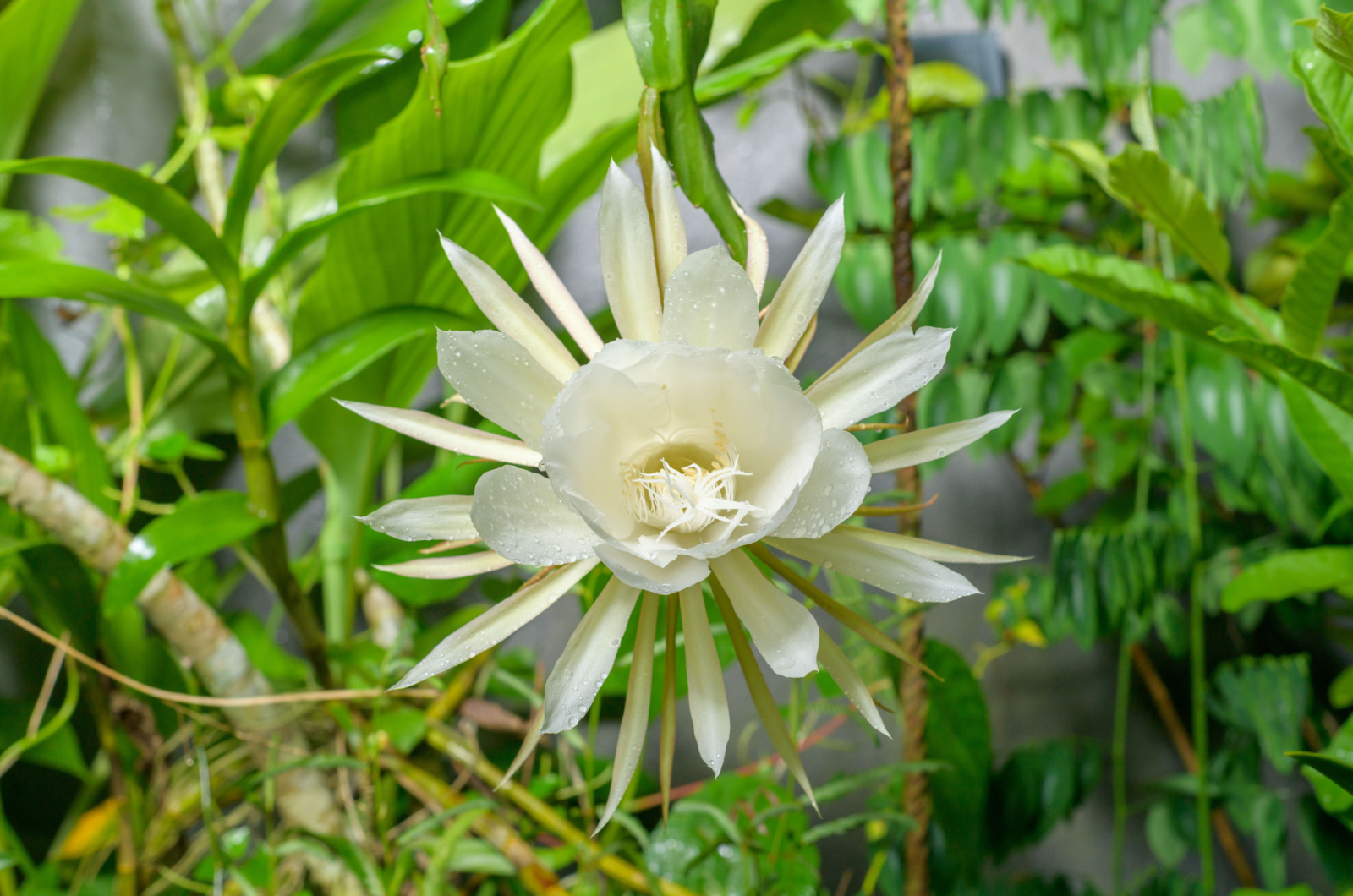Flowers blooming in the moonlight leave everyone breathless. It’s hard to imagine that there are certain plants that come alive only after the sun sets, however they are very much real.
Think about going to sleep and waking up to fresh blooms that have grown in the complete darkness. These unique blooms wait until nighttime to show their beauty, filling your space with magic and fragrance.
In this article, we are going to explore these nighttime flowers and how to care for them. Whether you’re a night owl or simply love the mystique of moonlit blossoms, you’re in for a treat!
1. Ric Rac Cactus (Selenicereus Anthonyanus and Epiphyllum Anguliger)
Ric Rac is a funny name for a cactus, but it’s better to say that instead of Selenicereus Anthonyanus and Epiphyllum Anguliger. Another popular name that you can use for this cactus is Fishbone cactus.
It is named for its distinctive foliage, which resembles a zigzag pattern or rickrack trim. The stems of this cactus are flat and they produce fragrant, night-blooming flowers.
They are typically white or pale yellow and bloom in the evening, filling the air with a sweet, pleasant scent. Ric Rac is a fantastic addition to indoor gardens and is known for its unusual appearance and nighttime floral display.
Although cacti can tolerate direct sunlight exposure, it’s better to keep your cactus in a bright, indirect light because direct sunlight can scorch its delicate foliage.
Maintain a warm environment for this cactus, with temperatures between 70 to 100 degrees Fahrenheit during the day and no lower than 50 degrees Fahrenheit at night. Water your cactus moderately and let the topsoil dry out between waterings.
Also read: The Best Soil For Cactus Plants + 7 Top Products
2. Krimson Queen (Hoya Carnosa)
Soil requirements: well-draining soil
Light requirements: bright, indirect sunlight
Water requirements: moderate
Krimson Queen is a hardy Hoya variety that produces waxy, heart-shaped leaves with creamy-white spots all over them. Clusters of fragrant, star-shaped flowers that bloom primarily at night can also be seen on the Hoya carnosa.
These flowers are typically pink or white with a sweet, honey-like scent that spreads throughout the room or garden.
This queen prefers growing in bright, indirect light. You should keep it in warm environments with temperatures between 60 to 80 degrees Fahrenheit. Just like with the abovementioned cactus, water your Hoya when the top inch of the soil feels dry.
3. Queen Of The Night Cactus (Epiphyllum Oxypetalum)
Soil requirements: well-draining
Light requirements: bright, indirect light
Water requirements: moderate
This magical plant produces large, white, fragrant flowers that open during the night and close at dawn – pretty amazing, right?
The Queen of the Night Cactus is a magnificent and dramatic cactus species renowned for its nighttime blooms. This cactus features flat, leaf-like stems that hang gracefully, often reaching considerable lengths. The flowers emit a powerful, sweet fragrance that intensifies after dark.
This cactus must also be protected from harsh afternoon sun, which is why you should keep it in bright, indirect light for most of the day. Also allow the topsoil to dry out before watering your night cactus again. Prune the cactus as needed to maintain its shape and size.
4. Snake Plant (Dracaena Trifasciata)
Soil requirements: well-draining
Light requirements: indirect, bright light
Water requirements: moderate
The Snake plant is a remarkable plant perfect for beginners. It is appreciated for its striking, upright leaves with creamy-white variegations. While not primarily known for its flowers, the snake plant occasionally produces small, fragrant, greenish-white blooms on tall stems.
And these flowers, you guessed it, grow at night! They tend to open during the night and release a subtle, sweet fragrance that spreads all over the place. However, did you know that snake plants are also oxygen providers?
These plants are known for their incredible air-purifying properties. So, you are not only getting a pretty plant with flowers that bloom at night, but you are also getting better indoor air quality!
When it comes to plant care, snake plants can grow in bright, indirect light but also in low light conditions. They also don’t need much watering and you can let the soil completely dry out between waterings.
However, you have to provide the plant with proper drainage so make sure to use well-draining soil and pots with drainage holes in the bottom.
You might also like: The Meaning Of Snake Plant And Its Cultural Symbolism





